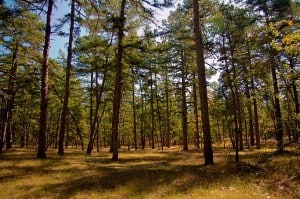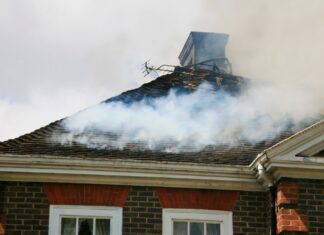
A rare insect that has killed tens of millions of ash trees in the United States is now active in Burlington County.
On July 6, the state Department of Agriculture reported the emerald ash borer had been detected in Westampton.
“Emerald ash borer is a fast-moving, highly destructive invasive pest, which could lead to the death of ash trees,” said state Secretary of Agriculture Douglas H. Fisher.
The adult emerald ash borer is a metallic green insect about one-half inch long and one-eighth inch wide, making it hard to detect in the wild.
The female beetles lay eggs on the bark of ash trees. The eggs hatch and the larvae bore into the bark to the fluid-conducting vessels underneath. The larvae feed and develop, cutting off the flow of nutrients and eventually killing the tree.
EAB attacks and kills North American species of true ash, and tree death occurs three to five years following initial infestation.
New Jersey is part of a federal quarantine to prevent the spread of the beetle, which prohibits movement of ash trees outside the quarantine zone.
The department also recommends not moving firewood, which is a vehicle for movement of tree-killing forest pests including EAB.
The state has set up traps in ash trees to track EAB’s potential spread in 27 Burlington County towns.
“We are currently setting up traps in each of 76 New Jersey towns in nine counties to delimit the spread of emerald ash borer,” NJDA Division of Plant Industry Director Joseph Zoltowski said.
It was first discovered in Somerset County in May 2014. Since then, it has been discovered in traps in Mercer and Burlington counties.
“We are still just beginning to discover the beetle,” Zoltowski said. “The results of the trapping project may yield more information, but it is too early to tell because we are still trapping until the end of August.”
“Now that the beetle is in New Jersey and is starting to spread, we ask that towns put plans in place to respond to the beetle,” Fisher said.
Township officials from the Pine Barrens region did not seem to be too concerned about the matter this early in the development.
“At this point in time, I’m more concerned about the gypsy moth and the pine looper moth, they are more predominant species that are after pine,” Tabernacle Township Administrator Doug Cramer said. “There are a lot of fields between us and Westampton.”
“Hopefully this isn’t going to hit us,” Shamong Township Administrator Sue Onorato said. “There hasn’t been any testing like there was for gypsy moth. We sign up for those evaluations by the Department of Agriculture when they test the area to determine if there is a sufficient amount of trees or woods that are at risk.”
Though there is concern the beetle will cause issues for towns, such as tree removal costs and liability if the dead tree causes damage, there is very little ash present in the Pine Barrens.
Onorato said if a tree were to be impacted, it would be the private property owner’s responsibility, just as any other issues with damaged trees or fallen branches would be.
“The biggest problem area in the state is the northwestern counties, where most of the ash resources are located,” Zoltowski said.
Township officials made it clear they do not have extensive background when it comes to this insect at this point but would work with the Department of Agriculture if there were to be an outbreak and educate residents by putting information on the township website.
The New Jersey Emerald Ash Borer website has many resources for municipal officials, woodland owners and residents.
“New Jersey has formed a task force made up of officials from the NJ Department of Agriculture, NJ Department of Environmental Protection, Rutgers University and the U.S. Department of Agriculture Animal Plant Health Inspection Service. We have developed a website with helpful information that towns, homeowners and woodland owners can follow to manage this insect and ash resources,” Zoltowski said.
For towns, there is an Emerald Ash Borer Management Plan template and a tree removal cost calculator. For homeowners, there is a risk map and treatment options. For woodland owners, there is a list of companies that will accept ash.
“Residents and municipalities must manage both the beetle and their ash resources,” Zoltowski said. “By the time the beetle has been found and killed a tree, the beetles have moved on and are capable of traveling 12 miles or more. So, unlike the gypsy moth suppression program, there is little the state can do to stop the advance of the bug.”
Report signs of the beetle to the Department of Agriculture at (609) 406–6939.
For more information about Emerald Ash Borer, visit www.emeraldashborer.nj.gov.









